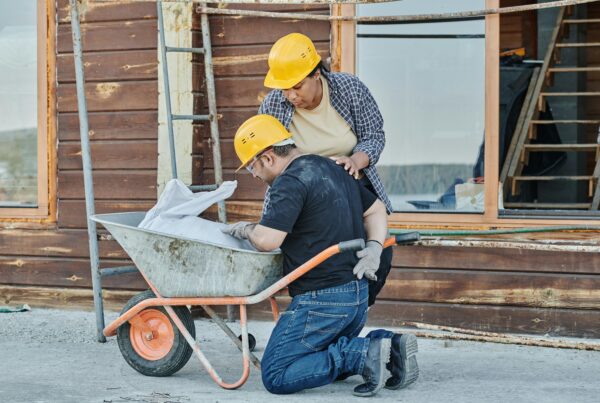Make courses more engaging by customising training to suit your delegates.

Research has yielded compelling evidence that tailored education to suit differing roles or recipient groups (i.e. management or operatives) is more effective. Tailored training works!
For example, in the case of Manual Handling, it is clearly important to educate and promote risk awareness among Managers and Workers by highlighting the detrimental effects of Musculoskeletal Disorders (MSDs). However, attitudes, concerns and behavioural intentions of managers may differ wildly to those of operative workers, and therefore the training and education of these two groups must be addressed differently.
Training needs to be specifically targeted to the primary concerns of these two different groups…

Managerial concerns:
- Reduced productivity
- Reduced product/service quality
- Employee suffering
- Damage to company reputation
- Increased absence
- Early retirement through ill health
- Increased staff turnover
- Higher recruitment & training costs
- Compensation claims
- Increased insurance premiums.

Workers’ concerns:
- Musculoskeletal discomfort
- Numbness, tingling
- Temporary or permanent disability
- Lost time from work
- Loss of earnings
- Treatment/healthcare costs.
There is strong evidence that the tailoring of training to suit the individual and their role is more effective in reducing manual handling injuries.
This is most likely to be achieved through task-specific training that is tailored to the recipients’ specific…
- work tasks
- environment within which they carry out that task
- equipment that they use (or have available)
- level of knowledge/training they already possess
- understanding of the dangers/risks involved.
So ideally, as a manual handling trainer, you should be addressing each of those areas when planning and compiling material for your training programme. Take time to research and understand your delegates prior to planning the course structure and content.
Conclusions from research carried out in this field, have indicated that ‘wide adoption of the tailored approach to education in musculoskeletal risk is likely to make a significant contribution to reducing both the prevalence and incidence of Musculoskeletal disorders (MSDs)’.
In this blog series, our expert trainers share their experience and show you how to make your manual handling courses more engaging.
[xyz-ihs snippet=”Newsletter-Subscribe-Medium”]Articles within this series will be published bi-monthly from January 2015. Subscribe to our email newsletter to stay informed.
- Introduction (Advice for Manual Handling trainers – How to make your courses more engaging).
- Tailor your course to fit your audience (this page)
- Apply the ‘Stages of Change’ model to your training.
- Make your course material engaging & mix up your training methods.
- Personalise your training with anecdotes and case studies.
- Explain the ‘why’ behind the ‘how’.
- Make ‘practical’ a key component of your training.
- Follow up your training with feedback and course evaluation.
References:
- A staged approach to reducing musculoskeletal disorders (MSDs) in the workplace. Prepared by Loughborough University for the Health and Safety Executive 2005.
- A staged approach to reducing musculoskeletal disorders (MSDs) in the workplace – A long term follow-up. Prepared by Loughborough University for the Health and Safety Executive 2007.








